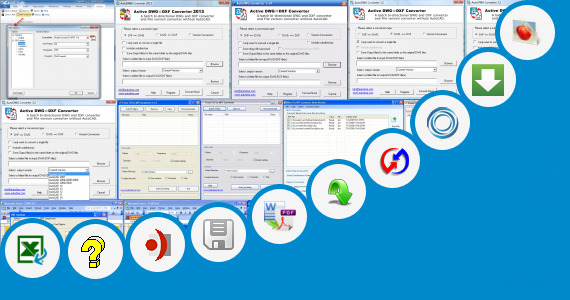
Free Ithmb Converter For Mac
ImageZipper can convert multiple.ithmb image between other image formats such as JPEG, PNG, GIF etc. In a batch conversion. Besides, it also allows image editing e.g. Resize, flip, rotate and watermark etc.
Amazon kindle for mac. This update also includes the ability to search within a book, a much-requested feature. Multi-column reading mode, which was to the iOS Kindle apps, makes its debut on Kindle for Mac with this release as well. New features aren’t the only changes in this release. Amazon's updated reader now lets you add and edit notes and highlight passages, both of which are synced across all Kindle devices and apps using the company's Whispersync technology.
If you’ve got an iPod photo,,, or, you know that you can put photos on your iPod for viewing on the iPod’s color screen. But how do you get photos off that iPod? For example, while visiting relatives a while back, I was showing pictures from a family event—thanks to the iPod photo’s handy present-on-the-TV feature—and got several requests to send one photo or another to various family members. I ended up writing down who wanted which photos and then grabbing them from iPhoto when I got home. But I wondered: How could I have pulled those photos off the iPod right then and there?
Now, if I’d set up my iTunes preferences to “Include full-resolution photos,” full-size copies of all the photos would have been easily accessible via the Photos folder of my iPod—I could have just connected my iPod to any computer (responding “No” to iTunes’ offer to link the iPod to the new computer, of course), put the iPod into disk mode, and then grabbed the photos. But I don’t generally use the full-rez option—full-resolution versions of all the photos in my iPhoto library would take up nearly as much space as my music! What about the lower-resolution versions iTunes converts and then stores on your iPod for slideshows? They’re stored in.ithmb files on your iPod (in the folder /Photos/Thumbs). These files can contain hundreds of images, and each image is stored at several resolutions, the largest of which is 720 x 480: Unfortunately, these.ithmb files are proprietary—standard image-viewing and -editing apps can’t view the photos stored within them. It would appear that you’re stuck, right?
Thanks to my colleague Christopher Breen, I Keith Wiley’s free ( ), a utility specifically designed to make sense of these.ithmb files. To grab photos off an iPod when you’re away from your own computer, you just plug your iPod into whatever Mac is nearby (again, responding “No” to iTunes’ offer to link the iPod to the new computer), and then launch Keith’s iPod Photo Reader. You then have two choices (both available from the File menu): “Open from iPod Photos/Thumbs folder” and “Open from 720x480.ithmb file (stored either on iPod or Mac).” I recommend the latter; according to Keith, the former will work only if the.ithmb file that actually contains your images is named “F1019_1.ithmb.” After choosing “Open from 720x480.ithmb file” from the File menu, select the largest file in your iPod’s /Photos/Thumbs folder and click the Open button. You’ll see a dialog that display’s the utility’s progress. (If you’ve got a lot of photos on your iPod, this can take quite a while; according to Keith, “Converting the images from the convoluted encoding [in the.ithmb files] to a more computer friendly encoding.is a fairly slow process.”) Once the procedure has finished, you’ll see a window with thumbnails of your images. (If your iPod contains more than 64 images, they will be separated into pages; use the [ and ] keys to switch between pages.) Click on any image to see the 720 x 480 version of it; to save the image, choose Save from the File menu. You’ve got your digital photo.
Unfortunately, Keith’s iPod Photo Reader isn’t without flaws. For one, its menus are a mess—none of the standard Mac OS keyboard shortcuts (Command+W to close a window, Command+Q to quit the application, and so on) work, and even the Quit item is in the wrong place (in the File menu rather than the application menu—actually, both, but only the one in the File menu works!). And the photos you extract from your iPod are in PICT format rather than JPEG or another cross-platform type, which means that you’ll have to convert them (for example, using Preview) if you want to give them to a Windows user. Finally—and this is a limitation of the photos stored on the iPod, not of Keith’s iPod Photo Reader—the maximum resolution of images (720 x 480) is suitable mainly for email or Web use, not for printing. But even with those issues, I’ve already used Keith’s iPod Photo Reader a couple times to grab copies of photos off my iPod when I’ve been away from home.
Inventor 2016 for mac. It’s a useful utility that I’ve copied to my iPod in disk mode so I always have it on hand.